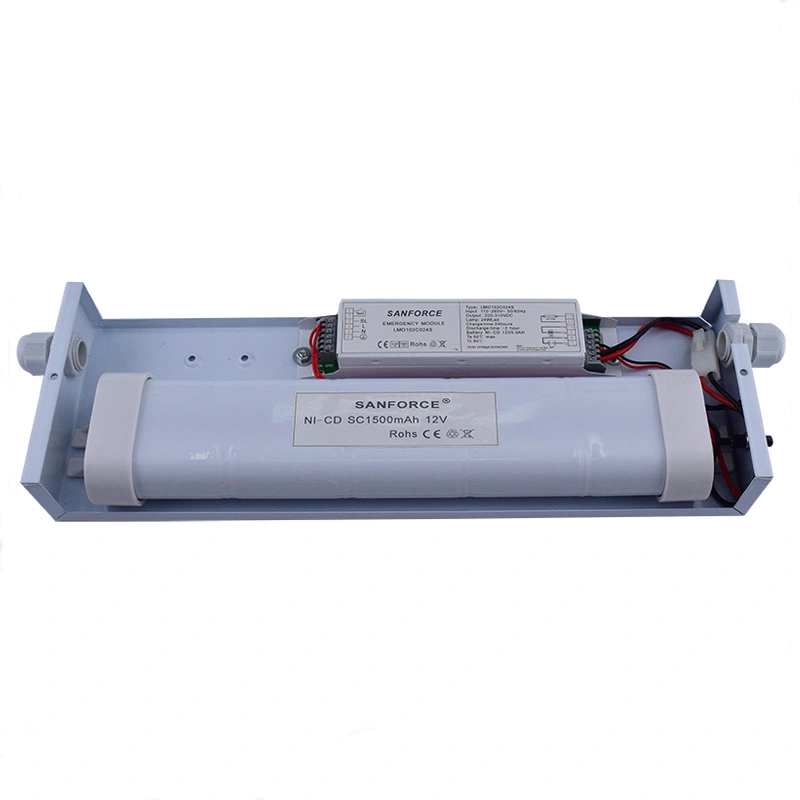Mexico’s garment manufacturing sector has become a vital part of the global supply chain, thanks to its strategic location, skilled labor force, and trade agreements like the USMCA.
However, this industry faces challenges that hinder its efficiency and profitability. Among these, energy consumption and power outages stand out.
Garment factories require a constant supply of electricity to run heavy machinery, maintain climate control systems, and provide adequate lighting for workers. Yet, frequent power outages can lead to significant disruptions in production, costing businesses valuable time and money.
One effective solution to address these challenges is the integration of emergency drivers systems. These systems are designed to provide backup lighting during power failures, ensuring that factory operations continue smoothly without jeopardizing safety or productivity.
Moreover, by replacing outdated lighting systems with modern fluorescent ballast units, factories can significantly reduce energy consumption, contributing to both cost savings and a greener, more sustainable business model.
The use of fluorescent ballast can help garment manufacturers optimize their energy usage while providing reliable backup lighting during emergencies, ultimately supporting both operational continuity and long-term financial health.
Importance of Energy Efficiency in Mexican Garment Manufacturing
Energy consumption is one of the most pressing challenges for garment manufacturers in Mexico. These factories require a significant amount of energy to run various processes, including lighting, machinery, and climate control systems. As a result, they face high electricity costs, which place a considerable strain on their profit margins.
The growing demand for energy in the garment manufacturing sector also contributes to an increased environmental impact. The heavy reliance on energy-intensive equipment often leads to inefficient energy use, resulting in excess energy consumption and a larger carbon footprint.
This situation is particularly concerning as there is increasing pressure globally to adopt more sustainable manufacturing practices.
Moreover, the high energy demand often leads to operational inefficiencies, as companies may not always have the best practices in place to monitor and reduce energy consumption. This can result in the overuse of resources, contributing to both economic and environmental challenges.
The lack of energy-efficient systems, such as advanced lighting technologies and automated power controls, leaves manufacturers vulnerable to rising operational costs.

How Emergency Lightings Can Address These Challenges?
1. Backup Power During Outages:
In the garment manufacturing industry, consistent lighting is crucial for maintaining worker productivity and operational safety. However, power interruptions can lead to significant disruptions, causing downtime and delays.
This is where emergency lighting becomes essential. By providing backup power during blackouts, these emergency systems ensure that the factory remains illuminated even when the main power supply is lost.
This minimizes downtime and ensures that workers can continue their tasks safely and efficiently without interruption. In garment factories, where precision and speed are crucial, emergency ballast systems help maintain operations, avoid costly delays, and ensure that critical processes, such as assembly lines, remain functional during power disruptions.
2. Energy-Saving LED Solutions:
Energy costs are a major concern for garment manufacturers, as lighting can consume a significant portion of the energy bill. Energy-saving LED solutions offer a practical approach to reducing power consumption while still meeting the lighting needs of the factory.
These energy-efficient LED emergency ballast systems consume less power compared to traditional lighting solutions, helping factories reduce their energy costs.
In addition, these LEDs provide a dual role by not only offering essential lighting during power outages but also acting as an energy-efficient source during regular operation.
Replacing older, inefficient lighting with LED fluorescent ballast systems helps factories achieve significant long-term savings on energy bills, supporting their sustainability goals and improving their bottom line.
3. Smart Emergency Lighting Systems:
With technological advancements, smart emergency lighting systems have become a game-changer for factories looking to enhance energy efficiency.
These intelligent systems can adjust the brightness of the lights based on the level of ambient light or the specific needs of different areas of the factory.
For example, in areas where workers are not present or during non-peak hours, the lighting can automatically dim, reducing energy wastage.
The integration of dimmable emergency ballasts ensures that the lighting levels can be fine-tuned, saving energy without compromising worker safety or productivity.
Additionally, these systems can be monitored remotely, enabling factory managers to make real-time adjustments and ensure optimal lighting levels throughout the facility.
By implementing smart lighting systems alongside energy-efficient solutions like emergency LED ballast, garment manufacturers can boost overall factory efficiency, reduce unnecessary energy consumption, and improve their sustainability practices.
Benefits of Emergency Lighting Beyond Energy Efficiency
Emergency lighting offers several advantages beyond just saving energy. It plays a vital role in ensuring worker safety, meeting legal requirements, and improving a company’s environmental reputation.
By implementing reliable and energy-efficient lighting systems, garment manufacturers can enhance their operations while demonstrating commitment to sustainability and safety.
Not sure what you required for your lightining project ?
Get in touch with us for FREE consultation.